ZHCSAU0B April 2012 – October 2015 LMP91002
PRODUCTION DATA.
- 1 特性
- 2 应用
- 3 说明
- 4 修订历史记录
- 5 Pin Configuration and Functions
- 6 Specifications
- 7 Detailed Description
- 8 Application and Implementation
- 9 Power Supply Recommendations
- 10Layout
- 11器件和文档支持
- 12机械、封装和可订购信息
6 Specifications
6.1 Absolute Maximum Ratings
See (1)(2)(3)| MIN | MAX | UNIT | ||
|---|---|---|---|---|
| Voltage between any two pins | 6 | V | ||
| Current through VDD or VSS | 50 | mA | ||
| Current sunk and sourced by CE pin | 10 | mA | ||
| Current out of other pins(2) | 5 | mA | ||
| Junction temperature(2) | 150 | °C | ||
| Storage temperature, Tstg | –65 | 150 | °C | |
(1) Stresses beyond those listed under Absolute Maximum Ratings may cause permanent damage to the device. These are stress ratings only, which do not imply functional operation of the device at these or any other conditions beyond those indicated under Recommended Operating Conditions. Exposure to absolute-maximum-rated conditions for extended periods may affect device reliability.
(2) For soldering specifications, see SNOA549.
(3) If Military/Aerospace specified devices are required, please contact the Texas Instruments Sales Office/ Distributors for availability and specifications.
6.2 ESD Ratings
| VALUE | UNIT | |||
|---|---|---|---|---|
| V(ESD) | Electrostatic discharge | Human body model (HBM), per ANSI/ESDA/JEDEC JS-001(1)(3) | ±2000 | V |
| Charged-device model (CDM), per JEDEC specification JESD22-C101(2) | ±1000 | |||
| Machine Model (MM) | ±200 | |||
(1) JEDEC document JEP155 states that 500-V HBM allows safe manufacturing with a standard ESD control process.
(2) JEDEC document JEP157 states that 250-V CDM allows safe manufacturing with a standard ESD control process.
(3) Human Body Model, applicable std. MIL-STD-883, Method 3015.7. Machine Model, applicable std. JESD22-A115-A (ESD MM std. of JEDEC) Field- Induced Charge-Device Model, applicable std. JESD22-C101-C (ESD FICDM std. of JEDEC).
6.3 Recommended Operating Conditions
| MIN | MAX | UNIT | ||
|---|---|---|---|---|
| Supply voltage VS = (VDD - AGND) | 2.7 | 3.6 | V | |
| Temperature(1) | –40 | 85 | °C | |
(1) The maximum power dissipation is a function of TJ(MAX), θJA, and the ambient temperature, TA. The maximum allowable power dissipation at any ambient temperature is PDMAX = (TJ(MAX) - TA)/ θJA All numbers apply for packages soldered directly onto a PCB.
6.4 Thermal Information
| THERMAL METRIC(1) | LMP91002 | UNIT | |
|---|---|---|---|
| NHL (WSON) | |||
| 14 PINS | |||
| RθJA | Junction-to-ambient thermal resistance (2) | 44 | °C/W |
(1) For more information about traditional and new thermal metrics, see the Semiconductor and IC Package Thermal Metrics application report, SPRA953.
(2) The maximum power dissipation is a function of TJ(MAX), θJA, and the ambient temperature, TA. The maximum allowable power dissipation at any ambient temperature is PDMAX = (TJ(MAX) - TA)/ θJA All numbers apply for packages soldered directly onto a PCB.
6.5 Electrical Characteristics
Unless otherwise specified, all limits ensured for TA = 25°C, VS= (VDD – AGND), VS= 3.3 V and AGND = DGND = 0 V, VREF = 2.5 V, Internal Zero = 20% VREF.(1)| PARAMETER | TEST CONDITIONS | MIN(4) | TYP(2) | MAX(4) | UNIT | ||
|---|---|---|---|---|---|---|---|
| POWER SUPPLY SPECIFICATION | |||||||
| IS | Supply current | 3-lead amperometric cell mode MODECN = 0x03 |
TA = 25ºC | 10 | 13.5 | µA | |
| At the temperature extremes | 15 | ||||||
| Standby mode MODECN = 0x02 |
TA = 25ºC | 6.5 | 8 | ||||
| At the temperature extremes | 10 | ||||||
| Deep sleep mode MODECN = 0x00 |
TA = 25ºC | 0.6 | 0.85 | ||||
| At the temperature extremes | 1 | ||||||
| POTENTIOSTAT | |||||||
| IRE | Input bias current at RE pin | VDD = 2.7 V; Internal zero 50% VDD |
TA = 25ºC | –90 | 90 | pA | |
| At the temperature extremes | –800 | 800 | |||||
| VDD = 3.6 V; Internal zero 50% VDD |
TA = 25ºC | –90 | 90 | ||||
| At the temperature extremes | –900 | 900 | |||||
| ICE | Minimum operating current capability | Sink | 750 | µA | |||
| Source | 750 | ||||||
| Minimum charging capability(5) | Sink | 10 | mA | ||||
| Source | 10 | ||||||
| AOL_A1 | Open-loop voltage gain of control loop operational amplifier (A1) | 300 mV ≤ VCE ≤ Vs – 300 mV, –750 µA ≤ ICE ≤ 750 µA |
TA = 25ºC | 120 | dB | ||
| At the temperature extremes | 104 | ||||||
| en_RW | Low frequency integrated noise between RE pin and WE pin | 0.1 Hz to 10 Hz(6) | 3.4 | µVpp | |||
| VOS_RW | WE voltage offset referred to RE | 0% VREF, internal zero = 20% VREF, at the temperature extremes |
–550 | 550 | µV | ||
| 0% VREF, internal zero = 50% VREF, at the temperature extremes |
–550 | 550 | |||||
| 0% VREF, internal zero = 67% VREF, at the temperature extremes |
–550 | 550 | |||||
| TcVOS_RW | WE voltage offset drift referred to RE from –40°C to 85°C(3) | 0% VREF, internal zero = 20% VREF | –4 | 4 | µV/°C | ||
| 0% VREF, internal zero = 50% VREF | –4 | 4 | |||||
| 0% VREF, internal zero = 67% VREF | –4 | 4 | |||||
| TIA_GAIN | Transimpedance gain accuracy | 5% | |||||
| Linearity | ±0.05% | ||||||
| Programmable TIA gains | 7 programmable gain resistors | 2.75 3.5 7 14 35 120 350 |
kΩ | ||||
| Maximum external gain resistor | 350 | ||||||
| TIA_ZV | Internal zero voltage | 3 programmable percentages of VREF | 20% 50% 67% |
||||
| 3 programmable percentages of VDD | 20% 50% 67% |
||||||
| Internal zero voltage accuracy | ±0.04% | ||||||
| RL | Load resistor | 10 | Ω | ||||
| Load accuracy | 5% | ||||||
| PSRR | Power supply rejection ratio at RE pin | 2.7 V ≤ VDD ≤ 5.25 V | Internal zero 20% VREF | 80 | 110 | dB | |
| Internal zero 50% VREF | 80 | 110 | |||||
| Internal zero 67% VREF | 80 | 110 | |||||
| EXTERNAL REFERENCE SPECIFICATION(3) | |||||||
| VREF | External voltage reference range | 1.5 | VDD | V | |||
| Input impedance | 10 | MΩ | |||||
(1) Electrical Table values apply only for factory testing conditions at the temperature indicated. Factory testing conditions result in very limited self-heating of the device such that TJ = TA. No ensured specification of parametric performance is indicated in the electrical tables under conditions of internal self-heating where TJ > TA. Absolute Maximum Ratings indicate junction temperature limits beyond which the device may be permanently degraded, either mechanically or electrically.
(2) Typical values represent the most likely parametric norm as determined at the time of characterization. Actual typical values may vary over time and will also depend on the application and configuration. The typical values are not tested and are not ensured on shipped production material.
(3) Offset voltage temperature drift is determined by dividing the change in VOS at the temperature extremes by the total temperature change.Starting from the measured voltage offset at temperature T1 (VOS_RW(T1)), the voltage offset at temperature T2 (VOS_RW(T2)) is calculated according the following formula: VOS_RW(T2)=VOS_RW(T1)+ABS(T2–T1)* TcVOS_RW.
(4) Limits are 100% production tested at 25°C. Limits over the operating temperature range are ensured through correlations using statistical quality control (SQC) method.
(5) At such currents no accuracy of the output voltage can be expected.
(6) This parameter includes both A1 and TIA's noise contribution.
6.6 I2C Interface
Unless otherwise specified, all limits ensured for at TA = 25°C, VS= (VDD – AGND), 2.7 V <VS< 3.6 V and AGND = DGND = 0 V, VREF = 2.5 V.(1)| PARAMETER | TEST CONDITIONS | MIN(2) | TYP(4) | MAX(2) | UNIT | ||
|---|---|---|---|---|---|---|---|
| VIH | Input High Voltage | At the temperature extremes | 0.7*VDD | V | |||
| VIL | Input Low Voltage | At the temperature extremes | 0.3*VDD | V | |||
| VOL | Output Low Voltage | IOUT = 3 mA, at the temperature extremes | 0.4 | V | |||
| Hysteresis(3) | At the temperature extremes | 0.1*VDD | V | ||||
| CIN | Input Capacitance on all digital pins | At the temperature extremes | 0.5 | pF | |||
(1) Electrical Table values apply only for factory testing conditions at the temperature indicated. Factory testing conditions result in very limited self-heating of the device such that TJ = TA. No ensured specification of parametric performance is indicated in the electrical tables under conditions of internal self-heating where TJ > TA. Absolute Maximum Ratings indicate junction temperature limits beyond which the device may be permanently degraded, either mechanically or electrically.
(2) Limits are 100% production tested at 25°C. Limits over the operating temperature range are ensured through correlations using statistical quality control (SQC) method.
(3) This parameter is specified by design or characterization.
(4) Typical values represent the most likely parametric norm as determined at the time of characterization. Actual typical values may vary over time and will also depend on the application and configuration. The typical values are not tested and are not ensured on shipped production material.
6.7 Timing Characteristics
Unless otherwise specified, all limits ensured for TA = 25°C, VS= (VDD – AGND), VS= 3.3 V and AGND = DGND = 0 V, VREF = 2.5 V, Internal Zero= 20% VREF. All limits apply at the temperature extremes. Refer to timing diagram in Figure 1(1).| PARAMETER | TEST CONDITIONS | MIN | TYP | MAX | UNIT | ||
|---|---|---|---|---|---|---|---|
| fSCL | Clock Frequency | At the temperature extremes | 10 | 100 | kHz | ||
| tLOW | Clock Low Time | At the temperature extremes | 4.7 | µs | |||
| tHIGH | Clock High Time | At the temperature extremes | 4 | µs | |||
| tHD;STA | Data valid | After this period, the first clock pulse is generated at the temperature extremes | 4 | µs | |||
| tSU;STA | Set-up time for a repeated START condition | At the temperature extremes | 4.7 | µs | |||
| tHD;DAT | Data hold time(4)
|
At the temperature extremes | 0 | ns | |||
| tSU;DAT | Data Set-up time | At the temperature extremes | 250 | ns | |||
| tf | SDA fall time(5) | IL ≤ 3 mA, CL ≤ 400 pF, at the temperature extremes |
250 | ns | |||
| tSU;STO | Set-up time for STOP condition | At the temperature extremes | 4 | µs | |||
| tBUF | Bus free time between a STOP and START condition | At the temperature extremes | 4.7 | µs | |||
| tVD;DAT | Data valid time | At the temperature extremes | 3.45 | µs | |||
| tVD;ACK | Data valid acknowledge time | At the temperature extremes | 3.45 | µs | |||
| tSP | Pulse width of spikes that must be suppressed by the input filter(5) | At the temperature extremes | 50 | ns | |||
| t_timeout | SCL and SDA Timeout | At the temperature extremes | 25 | 100 | ms | ||
| tEN;START | I2C Interface Enabling | At the temperature extremes | 600 | ns | |||
| tEN;STOP | I2C Interface Disabling | At the temperature extremes | 600 | ns | |||
| tEN;HIGH | time between consecutive I2C interface enabling and disabling | At the temperature extremes | 600 | ns | |||
(1) Electrical Table values apply only for factory testing conditions at the temperature indicated. Factory testing conditions result in very limited self-heating of the device such that TJ = TA. No ensured specification of parametric performance is indicated in the electrical tables under conditions of internal self-heating where TJ > TA. Absolute Maximum Ratings indicate junction temperature limits beyond which the device may be permanently degraded, either mechanically or electrically.
(2) All non-power pins of this device are protected against ESD by snapback devices. Voltage at such pins will rise beyond absmax if current is forced into pin.
(3) In case of external reference connected, the noise of the reference has to be added.
(4) LMP91002 provides an internal 300ns minimum hold time to bridge the undefined region of the falling edge of SCL.
(5) This parameter is specified by design or characterization.
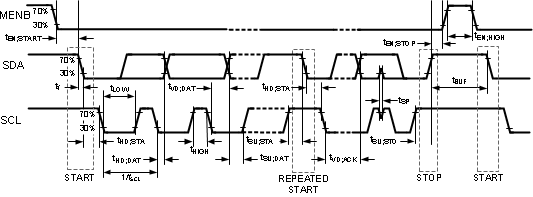 Figure 1. I2C Interface Timing Diagram
Figure 1. I2C Interface Timing Diagram
6.8 Typical Characteristics
Unless otherwise specified, TA = 25°C, VS= (VDD – AGND), 2.7 V <VS< 3.6 V and AGND = DGND = 0 V, VREF = 2.5 V.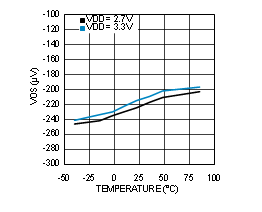 Figure 2. Input VOS_RW vs Temperature
Figure 2. Input VOS_RW vs Temperature
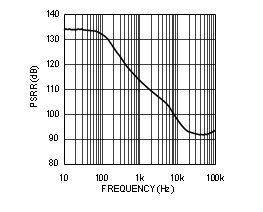 Figure 4. AC PSRR vs Frequency
Figure 4. AC PSRR vs Frequency
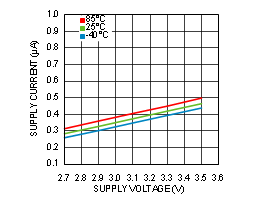 Figure 6. Supply Current vs VDD (Deep Sleep Mode)
Figure 6. Supply Current vs VDD (Deep Sleep Mode)
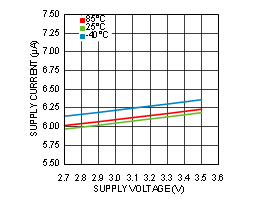 Figure 8. Supply Current vs VDD (Standby Mode)
Figure 8. Supply Current vs VDD (Standby Mode)
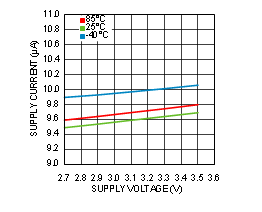 Figure 10. Supply Current vs VDD (3-Lead Amperometric Mode)
Figure 10. Supply Current vs VDD (3-Lead Amperometric Mode)
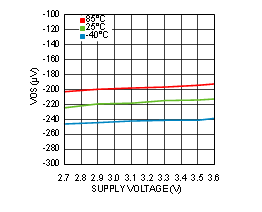 Figure 3. Input VOS_RW vs VDD
Figure 3. Input VOS_RW vs VDD
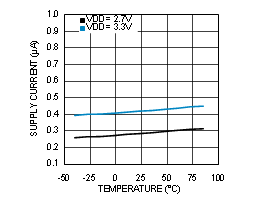 Figure 5. Supply Current vs Temperature (Deep Sleep Mode)
Figure 5. Supply Current vs Temperature (Deep Sleep Mode)
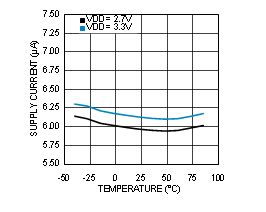 Figure 7. Supply Current vs Temperature (Standby Mode)
Figure 7. Supply Current vs Temperature (Standby Mode)
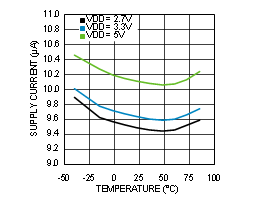 Figure 9. Supply Current vs Temperature (3-Lead Amperometric Mode)
Figure 9. Supply Current vs Temperature (3-Lead Amperometric Mode)
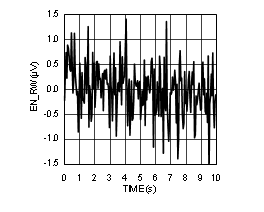 Figure 11. 0.1-Hz to 10-Hz Noise
Figure 11. 0.1-Hz to 10-Hz Noise